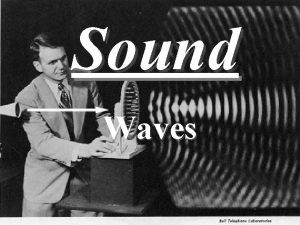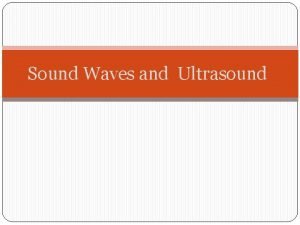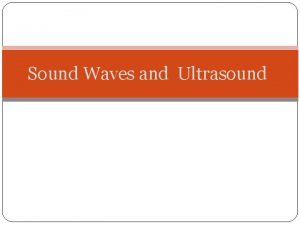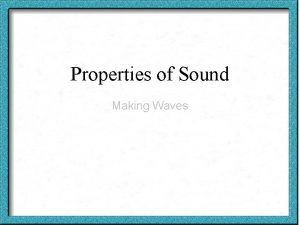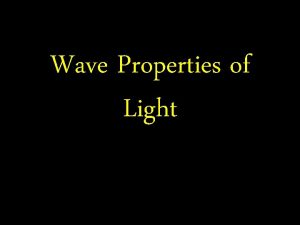Unit 07 Waves Wave Properties Sound Waves Light









- Slides: 9

Unit 07 Waves & Wave Properties Sound Waves & Light Waves Measuring the Speed of Light Lab

Microwave Ovens The Short Story • Microwave Ovens use “microwaves” to heat up food. • The microwave oven using the concept of reflection and standing waves to create a “box” (the oven) where food is subjected to an oscillating standing wave. • The +/- amplitude of the wave attracts and repels water molecules due to the water’s polarity. • The water rotates due to the attraction/repulsion. • Due to the frequency of the microwaves the water molecules rotate 2. 45 billion times each second! • Talk about friction! The friction between the water molecules in the food and the food molecules creates heat! • This heat is what causes your food to get hot!

How did they figure that out!? • Dr. Percy Spencer was working with microwaves in 1946 for the use of “radar”. – Radar can be used to locate moving objects and/or determine their speed. Helpful for the army and/or police. • He was using a new source of microwaves, the magnetron. • He also loved candy bars!!!! And he always had a candy bar in his pocket! • He noticed that the chocolate in his pocket would melt when he turned on the magnetron! • He realized that the magnetron was able to heat up foods! • He further investigated it in the “Speedie-Weenie” Project (named that because he used hot dogs as he further investigated how the microwaves heated food) • The first microwave was 5 ½ feet tall, over 750 lbs and cost $5000!!! • WOW!

Fun Facts • Conventional ovens have a heating element that gets hot (or a gas stove lights a fire) which heats up the air and the container and the food all at once. • Everything gets hot in this oven. • If there was zero humidity in the air (no water molecules in the air) the microwave wouldn’t feel hot when you put your hand in it. In fact, you probably notice your food is much hotter than your cup/plate if you put it in quickly. This is not true for a conventional oven. • This is why some cups/plates are not “microwavable safe” if they contain water molecules (like my dad’s broken cup) they can get very hot and dangerous.

A microwave oven has a “magnetron” which generates microwaves. These waves are sent out, and reflect off the other side of the oven, creating a standing wave.

Water molecules are polar. Meaning one side of the molecule is more negatively charged and the other side is more positively charged, even though the molecule itself is neutral. The images above show the water molecules in food will rotate due to the microwaves + or – amplitude. Notice they vibrate rapidly at the antinode and do not vibrate at the nodes.

The water rotates very quickly due to the frequency of the wave – 2. 45 billion times in one second! • This causes a lot of friction between the water molecules and the food molecules around them – thusly heating them up! • Once the food starts to get hot, the heat can continue to be transferred via conduction.

Measuring the Speed of Light • The standing wave would cause only certain spots in your food to get hot. • Once they got hot, they would heat the other parts of the food. • To evenly heat the food, microwaves have spinning plates that keep the food moving so all the water molecules will be oscillating, not just the ones at antinodes. • Take out the spinning plate, you’ll only have melting from the microwaves at the antinodes. • If you do it quickly enough you can measure the wavelength of the wave!

…but remember, melting happens at each Antinode…. In a standing wave antinode to antinode is only ½ wavelength Be sure to measure a FULL wavelength when recording in your data table!
 Light is an electromagnetic wave true or false
Light is an electromagnetic wave true or false Similarities of mechanical waves and electromagnetic waves
Similarities of mechanical waves and electromagnetic waves The wave chapter 13
The wave chapter 13 Is echolocation transverse or longitudinal
Is echolocation transverse or longitudinal Sound wave properties
Sound wave properties Light light light chapter 23
Light light light chapter 23 Into the light chapter 22
Into the light chapter 22 Light light light chapter 22
Light light light chapter 22 Soundwaves unit 21
Soundwaves unit 21 Sound waves unit 8
Sound waves unit 8










